What Is Style When You Are A Third-Culture Kid?
How does belonging to different cultures impact your perception of fashion and style
This is a long newsletter; if you read it via email, you must click on ‘view the entire message’ to read it in its entirety.
I am about to do something I thought I wouldn’t do on Le Journal Curioso. Writing about my style. I did it in my early twenties when I was still a student in Bologna until I left for Germany. I took pictures of my outfits more for the fun of taking my readers on a virtual city tour, like a tour guide would do in real life, than documenting my style per se. Indeed, once I left Italy, I quickly stopped doing it. Not that the streets of Munich were less fascinating than Bologna’s, but I found taking pictures of my outfits wasn’t something I enjoyed. I realised I disliked the idea as if once the pictures were taken, a part of my style was stolen from me. This said, in retrospect, I am glad I documented my style because now that I am looking back at those pictures, I am seeing how my style evolved (or not) along with my search for identity as a woman and, more specifically, as a woman belonging to the French and Cameroonian culture. Below are some (unfortunately low-quality) pictures of my style circa 2012.

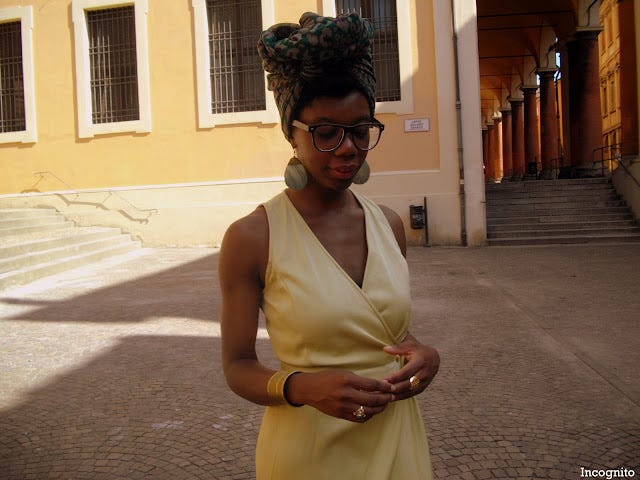
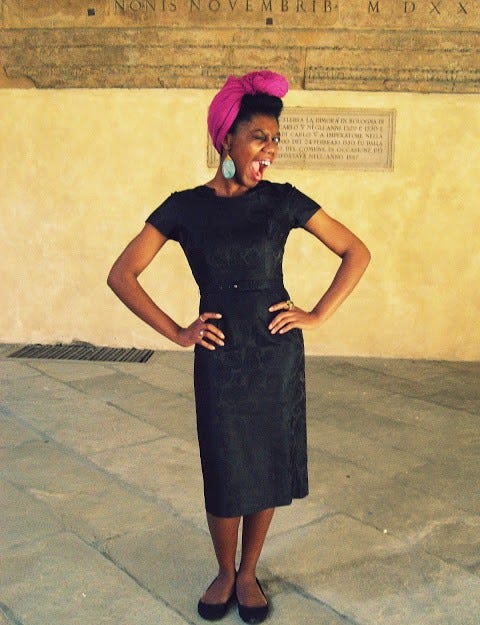
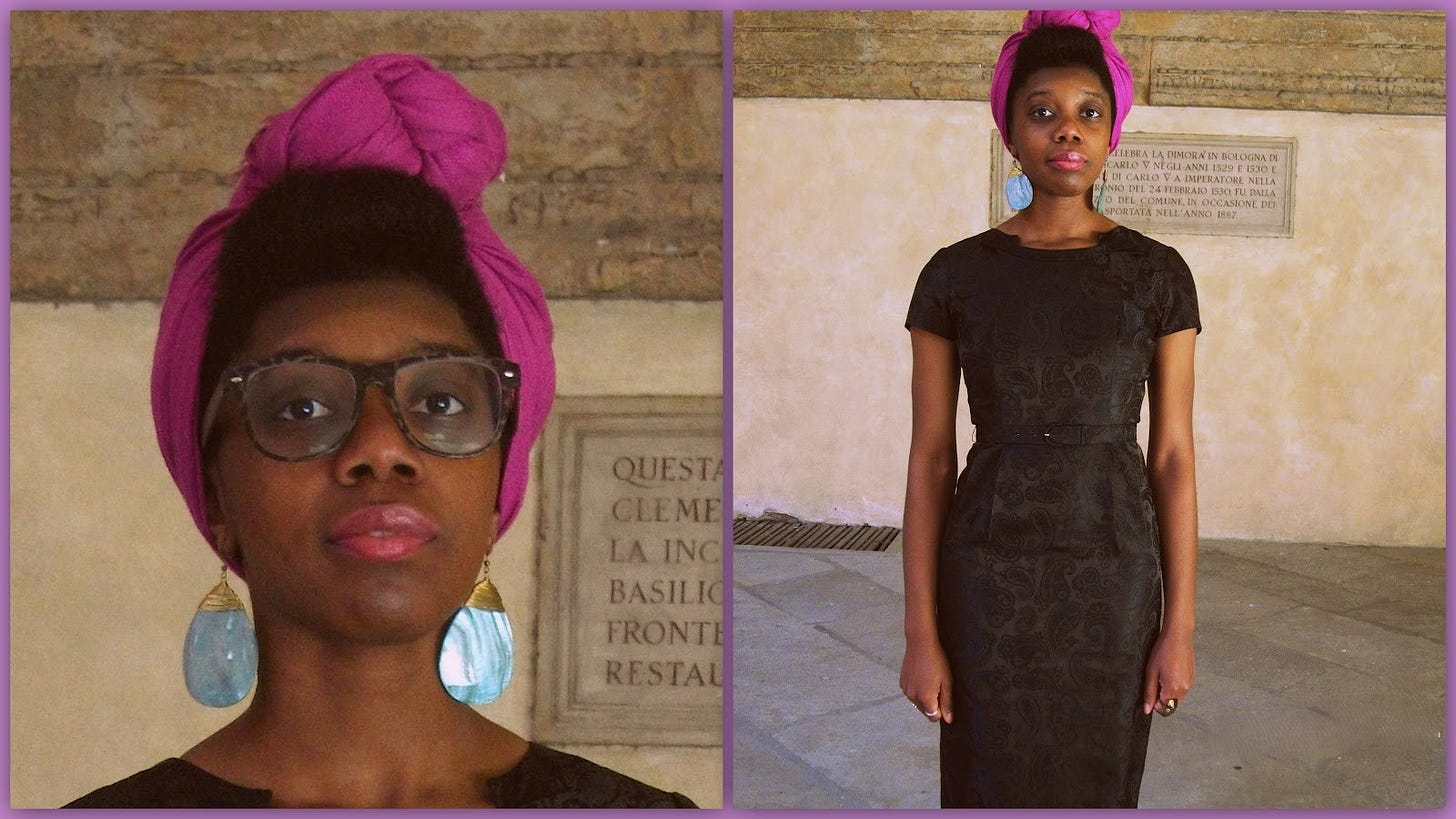
Now, let’s get into the crux of the matter.
Have you ever heard of the expression “third-culture kid?” I touched on this concept in a piece I wrote a year ago about the meaning of the hijab in the fashion industry.
[C]oined by the American sociologist and anthropologist couple John and Ruth Hill Useem in the 50s, [the] concept [of third-culture kid] describes children born to foreign parents raised in one or more countries. Consequently, they have a third culture that doesn’t completely fall within their parents’ home country and the country their family immigrated to.
In that article, I talked with Egyptian-Italian fashion content creator and activist Aya Mohamed, known as MilanPyramid whose words perfectly embody that concept: “I have always been curious about my identity and how I could express it through the idea of nation, citizenship, personal identity, and aesthetic. After spending some of my teenage years trying to identify between being Egyptian and Italian, I understood that the journey was more complex. Growing up, I never felt 100% one thing and 100% the other. I am considered Egyptian in Italy, whereas I am considered Italian in Egypt. There’s always a contradiction [...]. My parents have passed onto me their religion, and I am curious to discover it, learn about it, do my own research and delve into it to understand this side of my identity.”
Though I am not Muslim, Aya’s words resonated with me. Growing up between Cameroon and France with a Cameroonian mother and a French white father, I perfectly fit into the description of a third-culture kid. Not quite French, not quite Cameroonian, yet belonging to both cultures. But unlike Aya, I haven’t always been curious about my identity and how I expressed it through style. Being French but also being born into a country and a culture that has been squashed by French colonialism and imperialism, I have always struggled with the stereotype of the Parisienne and by extension, the French woman:
Emmanuelle Maréchal is a very French name. Reading it, nobody could imagine that I was born in Cameroon and grew up in an interracial family. I am Black like my mother, my father is white French, and my brother is mixed-race.
Since childhood, I have always known that being French and something else was possible. In Douala, I went to a French school where pupils were predominantly Black, but there were also other children with different backgrounds. I went to school with friends who were Greek, Lebanese, Indian, and Congolese. Conversely, my parents' friends were Cameroonians, Malians, Chadians, etc. Some families looked like us; nonetheless, I wouldn’t describe Cameroon as a diversity haven. I am aware, though, that my experience is the fruit of privilege because my father was a white expat.
When I was twelve, we returned to France after five years of living in a diversity bubble in Cameroon. We were in 1999, and I couldn’t grasp why nobody, from my classmates to teachers, could reconcile that I could be both French and Cameroonian. Not only did they not understand my high grades - because an African person is obviously less intelligent than a white one - but there also was disbelief about my fluency in French and differential treatment when it was my mother who participated in school meetings instead of my father, but above all, the mockery I received about my appearance made me immediately understand that I wasn’t the norm for them. It was a real cultural shock that taught me that France in these years wasn’t able to understand that Frenchness wasn’t synonymous with whiteness. But what does a twelve-year-old non-white pre-teen do in such a context? She assimilates. In French, the verb “s’assimiler” is a word I loathe because it refers to the concept of assimilation, according to which immigrants and their children are forced to forget their roots because French culture must prevail over the colonised one as if the “mission civilisatrice” never stopped.
Returning to France on the eve of my adolescence has been quite a peculiar experience. There was a clear disconnect between my childhood and the childhood - or I’d rather say teenagehood - of the pupils at school with me. I wasn’t a teen yet. I didn’t discuss boys; I wasn’t interested in wearing bras - unlike my peers with their peas-like boobs - nor shopping, and worse, I had no sense of fashion or style. So, on top of the racist mockery, I was picked on a lot because of my clothing in my first year back in middle school in France. I was made fun of because my parents dressed me. And according to the people making fun of me, it showed. Until then, I had no problem with my parents dressing me because they were my parents. It was normal they dressed me.
I am certainly not the first child who has been made fun of because of their clothing, but the racist component of it clearly added a specific flavour to the harassment I faced. So, within the span of a year, I changed completely. From the nerdy African girl wearing velvet trousers with turtleneck sweaters paired with suede boots worn OVER her trousers, I became that girl who found ways to turn her prim-and-proper wardrobe into a punk rock one.
Notice how once I adopted a punk rock style, I wasn’t the African girl anymore, but just a girl. It is because I assimilated. I had to. Style became a tool to assimilate, or better said, a means to divert my detractors’ attention from my Africanity. Or so I thought. Looking at photo albums and my diaries, there was always something that screamed, unbeknownst to me, that I didn’t completely assimilate. And it happened consistently, whatever style phase I was in.
Between middle school and high school, my style was defined by the music I listened to, yet there were always elements in my outfits that gave away that I was in-between cultures. One of my signature looks in high school was super baggy camouflage jeans styled with a vintage frilled collar shirt. My shoes of choice for that outfit were either Vans, brown leather Converse or Circa sneakers. I then completed my look with the biggest afro and jewellery by Cameroonian artisans. The funniest thing is that people called me Louis XIVth each time I wore that outfit because of the shirt. The elements recalling my Blackness and Africanity were obvious, yet people didn't pick on them but instead saw them as part of who I was. Diversion accomplished.
When I think about my style at that time, I thought my childhood in Cameroon didn’t influence me, yet it really informed how I dressed then and now. Below is a case in point.
My first memories of Cameroon style-wise is of my grandmother’s navy blue kabas that she wore daily. Navy blue is the colour widowed women wear in Cameroon, meanwhile kabas that are long dresses falling below the knee are a fashion memory of Cameroon’s colonial past. Kaba comes from the English verb “to cover” and was a type of dressing British missionaries’ wives imposed on Cameroonian women. Christianism has been and still is a very efficient tool to police African women’s bodies, and kabas were all about covering the indecent nudity that Cameroonian women flaunted in front of their husbands. And just like wax fabric, kabas became part of the Cameroonian fashion vocabulary. I would wear kabas around 8 or 9 only in Cameroon, but never in France unless it was at home or for a special occasion like the one below.
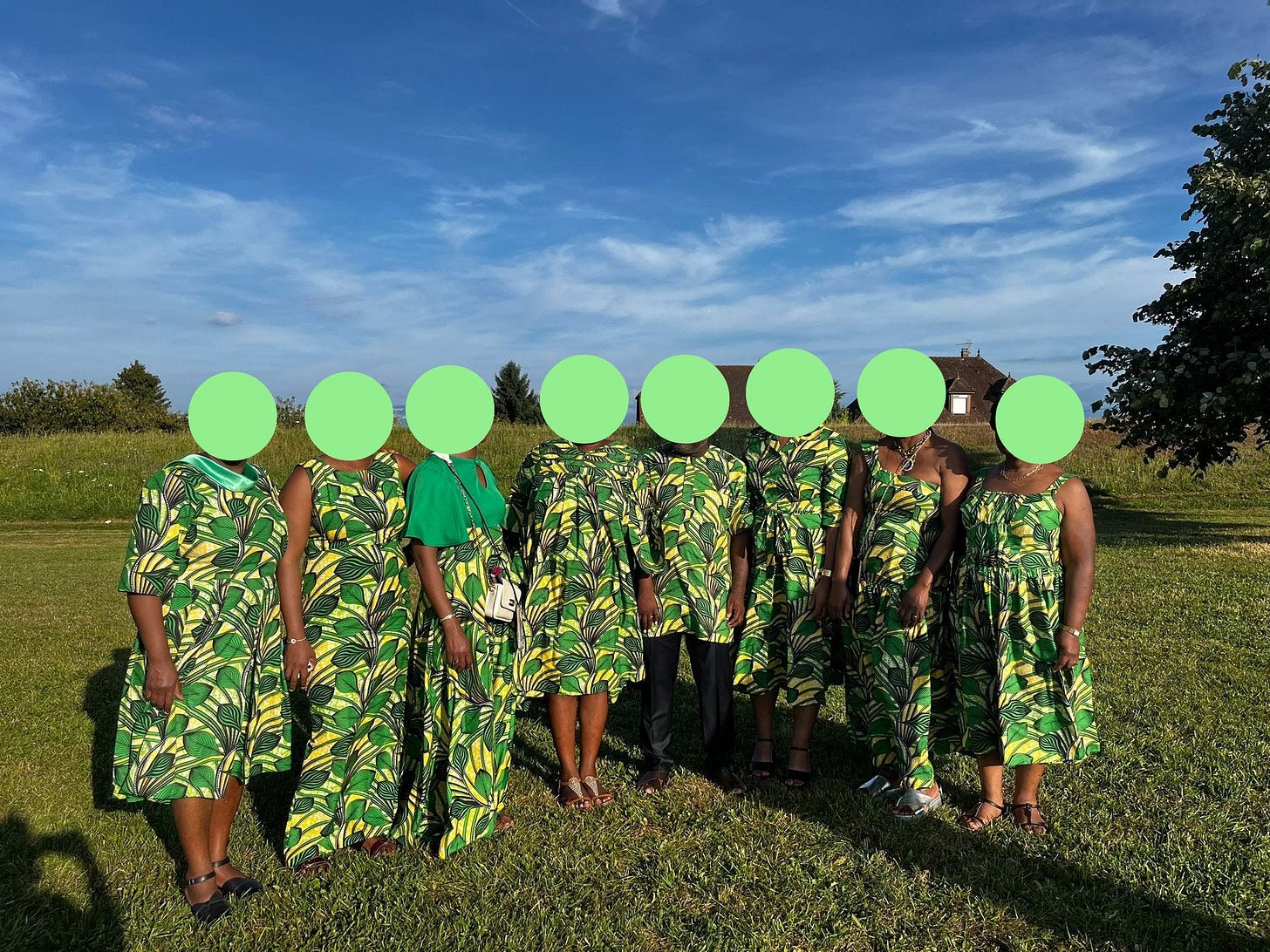
Cameroonian style, to me, is also synonymous with uniforms. At my parents’ home, in the countless photo albums we have, there is a picture of me wearing a school uniform. I must be three, and I wear a long dark green tartan dress with a pink apron on top with my name on it. The outfit is completed with navy blue t-strap shoes, white lace ruffled socks, and a water bottle. This last element is the ultimate accessory for every pupil going to school in Cameroon. I am wearing a uniform because all children in Cameroonian schools wear one. When we returned in 1995, my youngest aunt and older cousin wore uniforms to high and middle school. Both came to live with us, so every day, I saw my aunt wearing a navy blue pencil skirt that sat just below the knee with a blue short-sleeved shirt with one pocket on which she embroidered her school’s name, class and first and last name. As for my cousin, she was wearing a pleated navy blue skirt with a white short-sleeved skirt, which she embroidered just like my aunt.
Uniforms were a thing in Cameroon. It wasn’t just pupils going to school. It was the cook, the cleaning lady, the gardener, the driver, and the security guards in front of our house who wore uniforms. My father was an expat working for one of these African banks that really were branches of French banks. Hence, his position allowed for such privileges while revealing how the Françafrique – the French neocolonial economic and political system in its African ex-colonies – still affected the country. And this modern colonialism was clearly visible through the clothes the people working for expats wore.
I don’t remember going shopping in Cameroon, but I remember we went to the tailor to get our clothes done, which made me feel special. Our parents took advantage of the summer holidays in France to drag my brother and me to French high-street brands like Promod, Camaïeu, Kiabi, or some vintage stores to renew our wardrobe once we outgrew our clothes. Needless to say, after many trips to the tailor, seeing our parents picking the fabrics for our clothes and discussing what they wanted the tailor to make us, having our measurements taken, and being fitted, a trip to the shopping centre didn’t cut it. Living between Cameroon and France, I understood quickly that what was synonymous with luxury with my family members in Cameroon didn’t mean the same to me. For me, getting clothes made by a tailor was a luxury, not the last trendy clothing from a brand.
This meant I was immune to brands and trends for the longest time. Not that I care more about them now, but with such a childhood, it is no wonder that fashion wasn’t my passion, let alone style. That said, I realise now that I inherited the idea that clothes would help me assimilate from my father. As a white father raising two non-white children, when we returned to France, he had a rude awakening when he witnessed the racism I and my brother faced, so he was extremely strict about the way we dressed. He wanted us to look the part and assimilate because, like he often said,” I know you are my children, but people outside home won’t know it. They will judge you for your skin colour rather than for who you are, so please dress well so people don’t make assumptions about you.”
It was a statement I am glad I didn’t listen to, yet knowing the rules of being bon chic bon genre, the expression defining the French preppy style, allowed me to play around with them.
I also believe that the generational gap between my father and me helped me appreciate more French preppy codes and suits as I grew older. My father was born in 1945, and I was born in 1987. He comes from Vendée, a conservative region, and came to study in Bordeaux, a very bourgeois city. This mix of conservatism and bourgeoisie made my father feel pretty much disconnected when the students’ protests of May 68 happened. And it showed in his style. While young French students adopted a more relaxed look by wearing denim or emulating the style of Johnny Halliday, The Beatles, Eddie Mitchell, and The Rolling Stones, my father kept wearing suits. The yé-yé movement embodied by singers like Serge Gainsbourg and Jacques Dutronc or female artists like Françoise Hardy, Sylvie Vartan, or France Gall didn’t phase him aesthetically speaking. Below is a little ode to my father’s style, which has been the same since forever, and how it has influenced me.
Because of my father, my vision of French style is very much attached to menswear. Below are some images showing how I play with these preppy codes.
This story was my first attempt to show you my style. If you enjoy it, I might make it a regular feature. What say you?
I want to keep exploring the idea of style through the lens of a third-culture kid, so if you are one, please share your style story with me either in the comments or by taking the survey below.





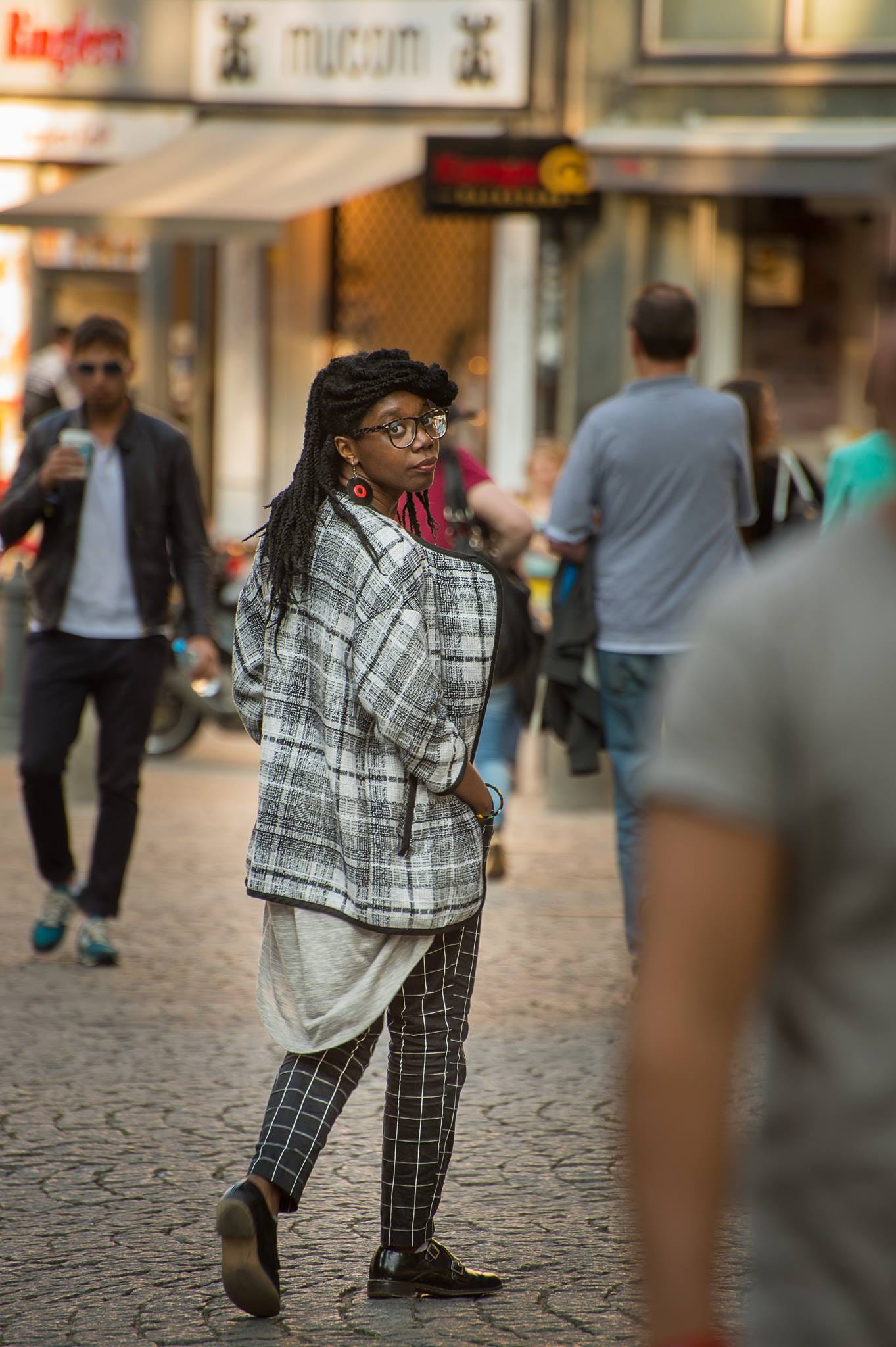
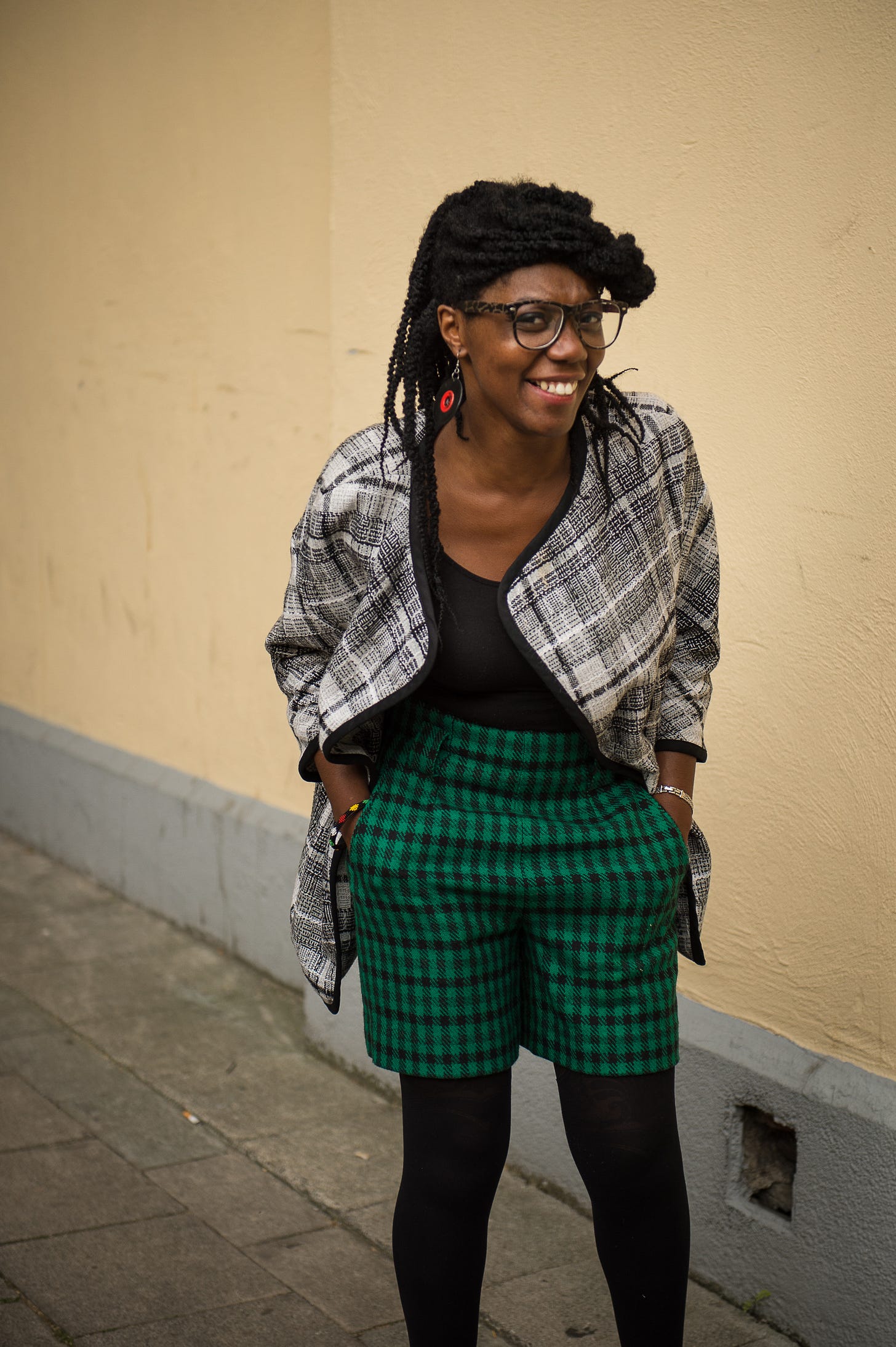

Your outfits are so cute! You look so pretty!
Really excellent piece - I learnt so much. I love your dress style and your writing style. Vraiment top! Merci.